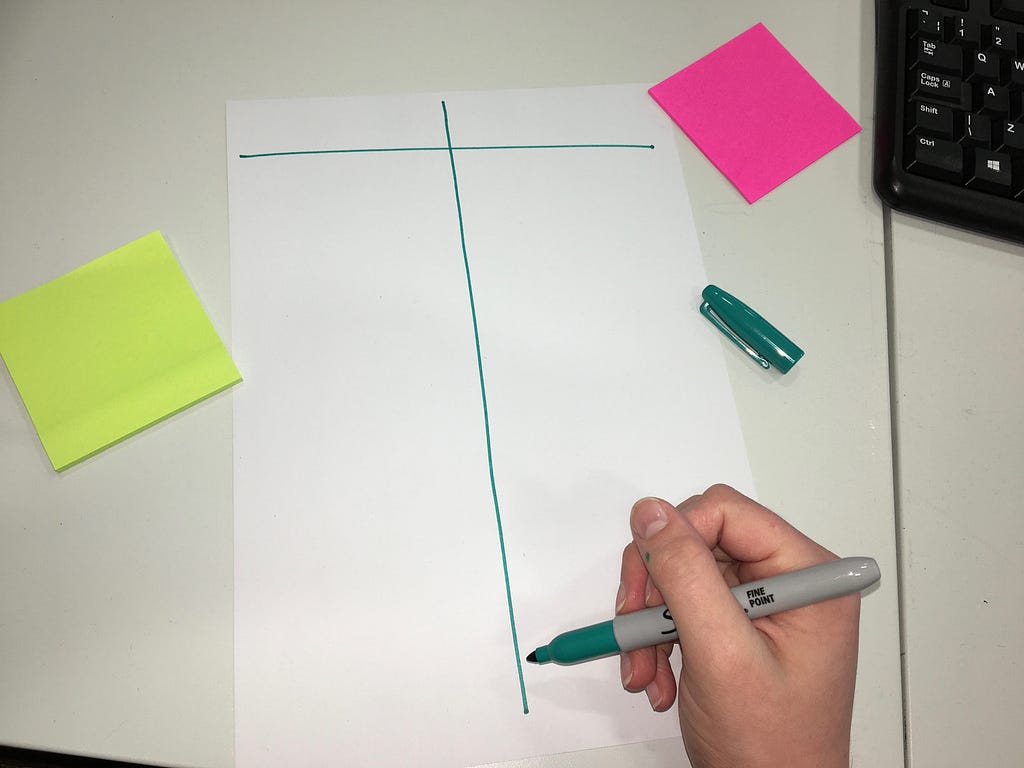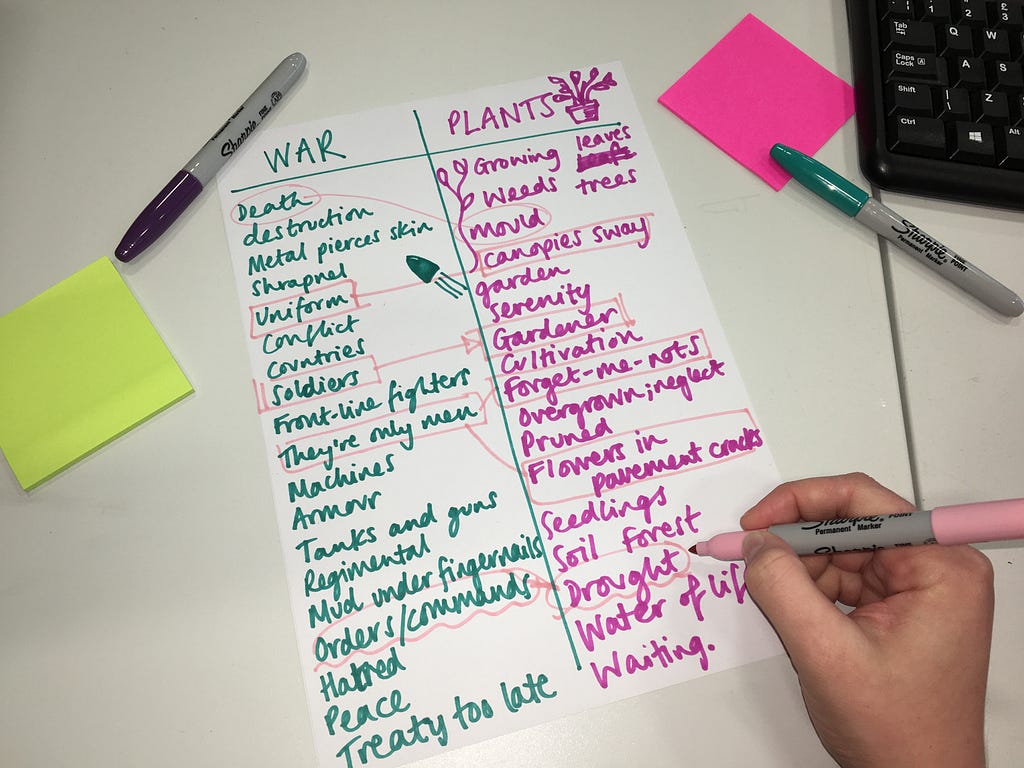BRAINSTORMING NEW IDEAS — PART 2: Word Association
As a writer, being faced with a blank page can inspire either crippling fear or wondrous anticipation — or both!
In this writing series, we’ll be discussing the ways we can generate some ideas to get started — though I love and worship the good ol’ imagination machine, I’ve found that mine can be somewhat unreliable at times.
So how can we practically help our brains fill that blank page? Take out your pen or bring up a new word doc and let’s get started!
— — — — — — — — — — — — — — — — —

This is one of my favourite exercises to run during workshops and webinars, and it’s something I do all the time personally in my own fiction and non-fiction writing.
(Note: too many people praise and love prompts and exercises during workshops when they’re led by a tutor, but feel odd doing them by themselves when they’re at home. I promise they still work for you when you’re on your couch, curled up in a blanket with a hot chocolate and trying to push your cat off your keyboard!)
First of all, you need to draw yourself two columns. Give yourself plenty of space to write on both sides, and a space at the top for a dominant word. This can be handwritten or typed, but it should look something like this:

Next, you need to decide on your root word. This is something that piques your interest and conjures up related ideas.
Your root word could be a theme, a person, a place. It can even be an emotion, or just an adjective you like. The important thing is to choose a word that has plenty of connotations.
My personal favourite type of root word for the first column is choosing a theme. This gives me a broad reach when I’m completing the next stage.
Based on this root word, write a list of associated words and phrases that connect back to that root. They can be completely random, or very strategic and organised. You can make a note anywhere on that column, you can draw arrows and diagrams, you can cross things out rewrite them. These are your notes, so OWN them!
Here’s an example of one of mine:

Hopefully, you should have a nice long list of words and phrases that link back in some way — however tenuous — to that root word. You can write until you exhaust all ideas, or set a timer for 3–5 minutes and try to cram as much into the time as possible.
DON’T WORRY: you will naturally slow down the longer you list. Our creative brains are fantastic with bursts of energy and initial ideas, but suck at keeping it up long-term.
At the moment you’re probably thinking, hey, I could have figured this out. It’s not so hard. What kind of a tip is this?
But don’t forget: there’s a second column!
(And aside from that, sometimes we need someone else to kick us up the bum, right?)
It’s time to choose another root word, this time for your second column. This word should be wholly unrelated to the first, and preferably much more random. One of my favourite ways to come up with this word is to look around the environment I’m in and pick a random object.
Again, it could be a theme, a person, a place, or any kind of word, as long as it’s not related to the first.
Then go through the same word-association process with your second column.
Mine looked like this:

The last stage, then, is to use these lists and mash them together like Frankenstein’s monster.
Pair up words and phrases from your first column with your second, and see what interesting images or ideas come from these hybrids.
If you’re looking to be really random, close your eyes and pick one from each side. Do they fit together? Probably not, but perhaps you’ll find some interesting combinations.
Let’s talk through mine:

Some of those associations really work — I like the idea of death being linked with mould and decay, which is one I purposefully linked. I could even has death with a capital letter — Death, a being. Perhaps he looks mouldy and decaying in his appearance.
I think soldiers being linked with gardeners might either spark a good metaphor or else an interesting character (a young gardener who enlists, perhaps?)
When I used the straight across method (linking those that are directly opposite one another), I had mixed results. I feel like the phrase ‘they’re only men’ links very well with ‘forget-me-nots’, and evokes an emotional image. On the other hand, ‘uniform’ and ‘canopies swaying’ didn’t originally bring any ideas to mind for me. Though, the more I considered it, I imagined fighters hiding up in the trees, perhaps samurai, camouflaged in the high tops of the branches, looking down on their enemies.
So with a little jigging around, word associations can come up with some excellent ideas, though perhaps not always.
The best thing?
Even if you don’t get any direct ideas from this try, you have gone from a blank page to a page full, and that’s something to cheer about!
— — — — — — — — — — — — — — —
In Part 3, we’ll be looking at another technique for generating ideas: genre checklists.
This article was originally published at www.emilysuzanneyoung.co.uk

BRAINSTORMING NEW IDEAS — PART 2: Word Association was originally published in The Writing Cooperative on Medium, where people are continuing the conversation by highlighting and responding to this story.
Read more: writingcooperative.com